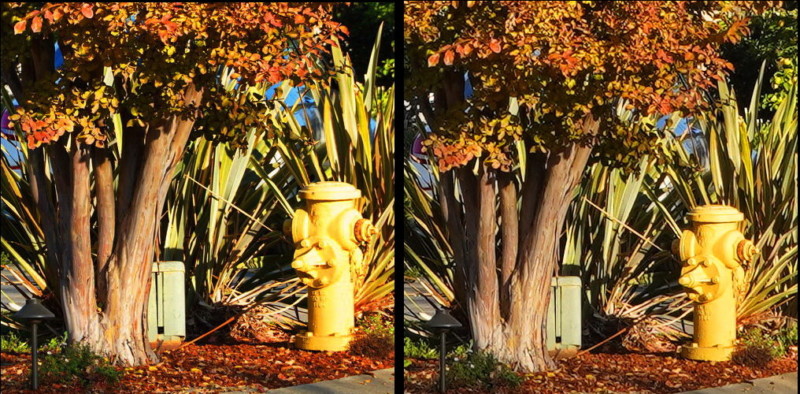![]()
I haven’t lusted for a fixed prime camera because it’s so easy for me to mount a short prime lens on my ILC. But I am intrigued by the idea of walking around with a short prime on my camera, even though it is limiting compared to walking around with a zoom.
We can zoom our prime shots by cropping.
Most full-screen images published online are 1200 to 1500 pixels wide. My Sony a6400 sensor is 6000 pixels wide, so there’s room to crop or resize. When I crop out a fourth of my original frame, the field of view approximates a 4x longer lens. Thus my 32mm shot crop below has the field of view of about a 135mm lens.
The examples below were shot with my 18-135mm zoom to create images with various focal lengths lenses.
This is the original 135mm focal length image downsized from 6000 to 1500 pixels for sharing or publication online:
This is a 32mm focal length image shot from the same place, cropped to 1500 pixels wide :
Here are 500 pixel crops taken out of above two images to aid pixel peeping:

Theoretically, the 135mm image should be better because when it was resized from 6000 pixels wide down to 1500 pixels, extra information was packed into the resized image. But it’s very difficult to detect that, even with the help of these crops.
None of the above images were sharpened. But I normally sharpen because, when done in moderation, it’s a free pass to improved image quality.
You can push the 4:1 ratio farther if you’re willing to accept the image degradation caused by upsizing your cropped image. I tried upsizing a pic of this scene shot with my lens at 18mm. It required upsizing 1.88x and looked pretty rough. Next I tried simulating a pic of the scene as if shot at 26mm which required 1.25x upsizing. Here is a crop of it compared to the others:

And above is the full image. This required 1.25x upsizing and 50% sharpening. The ratio between this shot and the original 135mm shot is about 5.3x.
My take on this experiment is that, if my shared or published images are 1500 pixels wide, cropping out a fourth of my 6000-pixel frame produces image quality that’s very close to a resized image shot with a lens of 4x longer focal length. And with slight degradation I can push the ratio 5.3x. 4x is like a 35mm lens that can be cropped to range from 35mm to 140mm. 5.3x would be like 35mm to 185mm.
This same criteria applied to a 61-megapixel Sony a7R IV with its 9565 pixel sensor width would permit a ratio of 6.38x which is like 35 to 223mm or 35 to 279mm with 1.25x upsizing.
Now let’s consider how this applies to some fixed prime cameras:
The Leica Q sensor is also 6000 pixels wide and the lens is 28mm. The same criteria would allow a range of 28mm to 112mm or 28mm to 140mm with 1.25x upsizing.
The Leica Q2 sensor is 8368 pixels wide and the lens is 28mm. The same criteria would allow a range of 28mm to 156mm or 28mm to 195mm with 1.25x upsizing.
The Fuji X100V sensor is 6240 pixels wide and the lens is 23mm. The same criteria would allow a range of 23mm to 96mm or 23mm to 120mm with 1.25x upsizing.
You can do your own experiments by shooting the same subject, from the same spot, with focal lengths that differ by 4x, 5x, or whatever ratio you want to try.
About the author: Alan Adler lives in Los Altos, California. He has been an avid photographer for 60 years. He is also a well-known inventor with about 40 patents. His best-known inventions are the Aerobie flying ring and the AeroPress coffee maker.
Author: Alan Adler
Source: Petapixel



